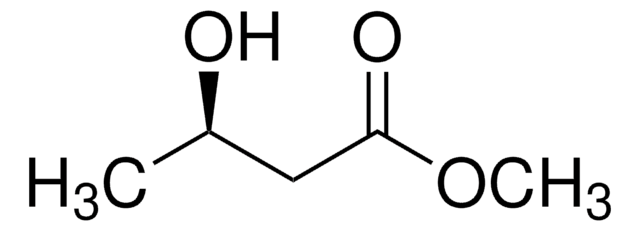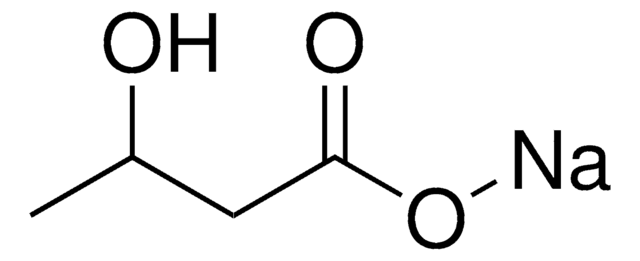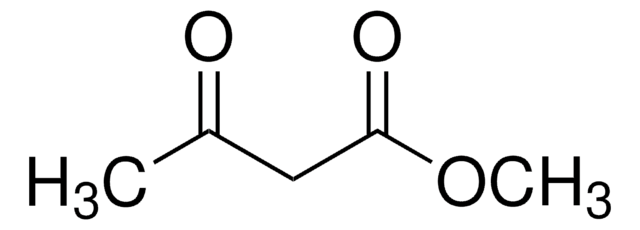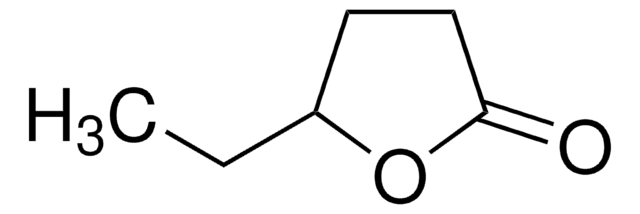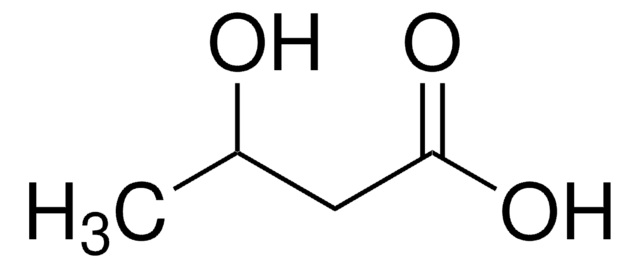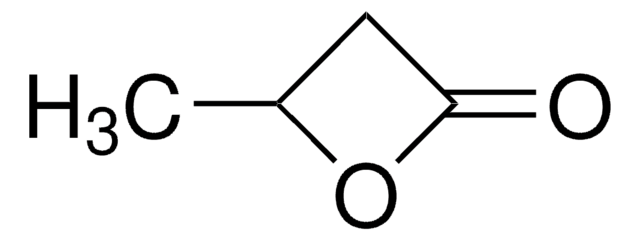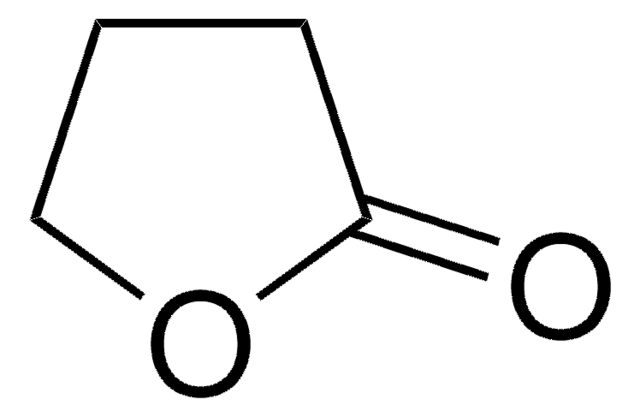W342807
Ethyl 3-hydroxybutyrate
≥97%, FG
Sinonimo/i:
grape butyrate
About This Item
Fragrance grade
Halal
Kosher
Prodotti consigliati
Origine biologica
synthetic
Livello qualitativo
Grado
FG
Fragrance grade
Halal
Kosher
agenzia
follows IFRA guidelines
Conformità normativa
EU Regulation 1223/2009
EU Regulation 1334/2008 & 178/2002
Saggio
≥97%
Indice di rifrazione
n20/D 1.42 (lit.)
P. ebollizione
170 °C (lit.)
Densità
1.017 g/mL at 25 °C (lit.)
applicazioni
flavors and fragrances
Documentazione
see Safety & Documentation for available documents
Allergene alimentare
no known allergens
Allergene in fragranze
no known allergens
Organolettico
grape; green; fruity
Stringa SMILE
CCOC(=O)CC(C)O
InChI
1S/C6H12O3/c1-3-9-6(8)4-5(2)7/h5,7H,3-4H2,1-2H3
OMSUIQOIVADKIM-UHFFFAOYSA-N
Cerchi prodotti simili? Visita Guida al confronto tra prodotti
Categorie correlate
Descrizione generale
Applicazioni
- Deciphering the immobilization of lipases on hydrophobic wrinkled silica nanoparticles.: This study explores the immobilization of lipases on hydrophobic wrinkled silica nanoparticles, highlighting the potential of these nanoparticles in biocatalysis applications, which can be critical for biochemical synthesis processes involving compounds like Ethyl 3-hydroxybutyrate. (Pota et al., 2024).
- Exploring the Therapeutic Potential of Ethyl 3-Hydroxybutyrate in Alleviating Skeletal Muscle Wasting in Cancer Cachexia.: This research investigates the therapeutic effects of Ethyl 3-hydroxybutyrate in reducing muscle wasting in cancer patients, demonstrating its potential biochemical applications in medical treatments. (Zhou et al., 2023).
- High-Pressure Depolymerization of Poly(lactic acid) (PLA) and Poly(3-hydroxybutyrate) (PHB) Using Bio-Based Solvents: A Way to Produce Alkyl Esters Which Can Be Modified to Polymerizable Monomers.: This study explores the depolymerization of biopolymers using bio-based solvents, resulting in alkyl esters like Ethyl 3-hydroxybutyrate, highlighting its applications in sustainable biochemical processes. (Jašek et al., 2022).
Codice della classe di stoccaggio
10 - Combustible liquids
Classe di pericolosità dell'acqua (WGK)
WGK 3
Punto d’infiammabilità (°F)
170.6 °F - closed cup
Punto d’infiammabilità (°C)
77 °C - closed cup
Dispositivi di protezione individuale
Eyeshields, Gloves, type ABEK (EN14387) respirator filter
Scegli una delle versioni più recenti:
Possiedi già questo prodotto?
I documenti relativi ai prodotti acquistati recentemente sono disponibili nell’Archivio dei documenti.
I clienti hanno visto anche
Il team dei nostri ricercatori vanta grande esperienza in tutte le aree della ricerca quali Life Science, scienza dei materiali, sintesi chimica, cromatografia, discipline analitiche, ecc..
Contatta l'Assistenza Tecnica.

